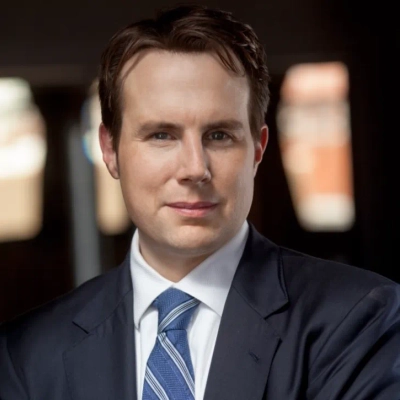Startup Dilemmas: Rapid Growth vs. Quality in Early Teams
Startups face a critical tension between scaling quickly and maintaining the quality standards that made them successful in the first place. This article draws on insights from industry experts who have navigated this challenge across hiring, operations, and team development. The strategies outlined here offer practical approaches to building systems, refining processes, and making strategic tradeoffs that protect quality while enabling sustainable growth.
- Delay Releases to Automate Testing First
- Scale Capability Instead of Headcount Rapidly
- Systemize Judgment Through SOPs and Automation
- Pause Growth to Preserve Quality Culture
- Protect People Who Defend Your Standards
- Build Specialist Networks With Structured Playbooks
- Redesign Workflow With Cross-Functional Project Teams
- Invest in Infrastructure Before Doubling Headcount
- Refine Onboarding Systems Before Scaling Teams
- Establish Repeatable Systems Before Market Expansion
- Simplify Operations to Protect Core Standards
- Build Better Systems Before Adding Clients
- Limit Hiring and Obsess Over Onboarding
- Filter Candidates Based on Internal Motivation
- Pre-Set Quality Cutoffs Before Growth Accelerates
- Create Text and Video Procedures Early
- Hire Hybrid IT Staff for Versatility
Delay Releases to Automate Testing First
In the early stages of our company, juggling growth with quality was like tightrope walking in a hurricane. We had investor expectations, a growing user base, and a tiny team. There was always pressure to hire quickly and release faster. But I soon realized that it was a short-term gain.
One of the most challenging times was when we were scaling our platform to serve an influx of new users. We could have cobbled things together and sorted things out afterwards, but that would have involved a sacrifice of reliability, something that underpins user trust. Instead, we traded off releases, created a lightweight code review process, and established automated testing, even though it meant delaying our next launch by two weeks.
It was a hard call, especially when growth targets were at risk, but it was worth it. The system remained solid under pressure, and our engineers came to appreciate careful velocity over disorderly hustle. That lesson influenced my leadership. A rapidly growing startup can endure its own tempo only if it cultivates a culture that makes excellence second nature.

Scale Capability Instead of Headcount Rapidly
I nearly torpedoed my agency in year three by refusing to hire fast when we landed a massive international client. Everyone told me to bring on five new people immediately, but I’d seen agencies implode from quality drops. Instead, I hired two senior people over four months and turned down three mid-sized projects during that period.
The turning point was when a potential client in Germany needed us to start in two weeks. My team was at capacity, and I had to say no. That hurt. But six months later, they came back specifically because their first agency had overpromised with junior staff who didn’t understand international SEO nuances. We’ve now worked together for eight years.
I built our weekly R&D time and individual training budgets specifically because of this early tension. When you can’t scale headcount fast, you scale capability instead. One strategist who deeply understands technical SEO across markets is worth more than three generalists fumbling through it.
The 4-day week came from this same philosophy — I’d rather have a smaller team operating at peak performance than burn people out chasing every opportunity. We track client retention rather than client count, and ours sits above 90% because we never stretched ourselves too thin to deliver properly.

Systemize Judgment Through SOPs and Automation
In the early days, our biggest tension was between scaling fast to meet client demand and preserving the precision and care our recruitment process was known for. When you’re growing, the instinct is to add people, but more headcount without systems just multiplies chaos.
We solved this by building a tech-first operations layer before hiring aggressively. Every recruiter followed a defined SOP (Standard Operating Procedure) mapped inside Microsoft SharePoint and Power Automate. This included how every job brief entered the pipeline, how candidate screening feedback was logged, and how follow-ups were tracked. Each stage triggered automated notifications, reminders, and quality gates.
For example, our Candidate Evaluation SOP had specific checkpoints: skills screening (PowerApps form), client calibration (Teams-integrated checklist), and reference verification (SharePoint tracker). The system automatically blocked a candidate from being shortlisted until every checkpoint was marked complete.
We also used Power BI dashboards to visualize performance and conversion trends, helping us see where process breakdowns occurred. This made it possible to grow our active client base by 40% in six months without diluting service quality.
One of the hardest moments came when we landed multiple enterprise clients at once. Instead of hiring a dozen recruiters overnight, we spent two weeks refining the “Intake-to-Offer” workflow, tightening SLAs and automating repetitive actions like resume parsing, acknowledgment emails, and status updates. The result was a leaner but more consistent team that handled triple the workload with fewer errors.
Lesson: sustainable growth isn’t about hiring fast — instead, it’s about systemizing judgment. If your quality depends on individuals, you’ll burn out. If it’s built into your SOPs and tech stack, you’ll scale naturally without losing your reputation for excellence.

Pause Growth to Preserve Quality Culture
In the early days, growth felt like both a blessing and a test of discipline. We were getting more clients than we could comfortably handle, which is every startup founder’s dream until you realize it can break the very systems that helped you get there. I remember a specific moment when this balance between growth and quality became painfully clear.
We had just landed a few large clients in rapid succession. The excitement in the team was high, and the temptation to scale fast — to hire quickly and take on even more work — was strong. But I started noticing something subtle: the quality of our deliverables, which had been our hallmark, was beginning to wobble. Not because of a lack of talent, but because of the strain of onboarding new people too quickly without giving them the space to absorb our culture, workflows, and standards.
One project in particular stands out. We had promised a client an aggressive delivery timeline on a complex automation build. In the rush to meet that deadline, we cut corners in the internal QA process, something we’d never done before. The client caught a data mapping issue in the first week of rollout — not a catastrophic mistake, but enough to shake my confidence in how we were scaling. That moment forced me to pause and rethink our approach to growth.
I made a deliberate choice to slow things down. We refined our hiring process to focus not just on skill but on adaptability and alignment with our quality-first mindset. I also introduced a “mentorship sprint” system where every new hire worked closely with a senior team member for their first two projects. It slowed our onboarding but dramatically improved consistency and confidence across the team.
That experience taught me that sustainable growth isn’t about speed — it’s about rhythm. You can scale fast or you can scale strong, but doing both requires knowing when to hit pause. It’s better to grow at 80% capacity and deliver 100% quality than the other way around. Looking back, that decision not only protected our reputation but laid the foundation for a team that could handle growth without compromising what made us different in the first place.
Protect People Who Defend Your Standards
This is one of the most persistent tensions in any new venture. In the beginning, the founder is the chief quality officer. Every feature, every line of copy, and every customer interaction passes through you. But as you hire and the pace quickens, that model breaks. The real challenge isn’t about creating processes or checklists to enforce quality. It’s about deciding what you’re willing to sacrifice in the short term to build a team that instinctively protects the product in the long term. Speed feels urgent and measurable, while quality feels slow and abstract, making it an easy thing to trade away moment by moment.
The most important and subtle shift is moving from being the “enforcer” of quality to being the “protector” of the people who defend it. Your job is no longer to spot every flaw yourself. It’s to create an environment where the most junior person on the team feels not just safe, but obligated, to say, “This isn’t ready.” When you’re staring down a deadline and a team member raises a flag that will cause a painful delay, that’s the moment of truth. If you override them to hit the date, you’ve just trained your entire team that speed matters more than standards. If you back them up, even at a cost, you’ve just turned one person’s conscience into the team’s shared culture.
I remember a specific instance when we were days from launching a major new feature for our biggest client. An engineer who had only been with us for two months found a subtle data-consistency bug. It was a nasty edge case, unlikely to surface, and fixing it would mean delaying the launch by a week and having a very awkward conversation with our client. The pressure to ship was enormous. I pulled the engineer aside, listened to the concern, and then announced to the whole team that we were delaying the launch. I took the heat from the client myself. That one decision did more to establish our engineering culture than any mission statement ever could. It taught me that you don’t build a culture of quality by setting standards, but by protecting the people who uphold them, especially when it hurts.

Build Specialist Networks With Structured Playbooks
Balancing rapid growth with quality in our early startup was one of my greatest challenges, particularly when I made the mistake of hiring generalists too quickly. I learned that quality suffered when we tried to scale with people who lacked specialized expertise in critical areas. Our turning point came when we shifted to building a network of highly skilled specialists who worked part-time, supported by a structured two-week onboarding process and custom playbooks. This approach helped us maintain quality while growing, as evidenced by our ability to increase a client’s SaaS funnel conversion rate from 3.1% to 4.4% in just 30 days. The most challenging aspect was ensuring knowledge transfer between specialists and our in-house team, but creating dedicated point person relationships solved this bottleneck and allowed us to scale without compromising results.

Redesign Workflow With Cross-Functional Project Teams
Balancing speed and quality in the early days felt a lot like running a marathon while tightening the bolts on your shoes. We were scaling fast — new clients, new product categories — but every shortcut we took risked compromising the precision our reputation depended on. The toughest moment came when a major client asked us to double their order capacity in half the time. The temptation to say “yes” immediately was strong, but experience told me that rapid growth without structure leads to rework, not results.
Instead, we slowed down just enough to redesign our workflow. We created smaller cross-functional teams that owned full project lifecycles rather than passing tasks down the line. It took extra coordination upfront, but the output was smoother, faster, and more consistent.
The lesson: growth is only sustainable when quality scales with it. Sometimes the fastest way forward is to pause, recalibrate, and make sure your foundation can handle what you’re building next.
Invest in Infrastructure Before Doubling Headcount
Clarity in culture is the first step in striking a balance between quality and growth. When Branch first started out, we were expanding swiftly and facing off against bigger, better-funded competitors. Hiring quickly to keep up with their pace was alluring, but I quickly learned that one poorly matched hire can slow you down more than no hire at all. Rather than putting speed first, we developed a framework based on our definition of “quality,” which included not only product performance but also accountability, communication, and decision-making. We reduced the number of employees while increasing productivity by hiring individuals who could think long-term and execute quickly.
Our customer base was growing faster than our operations could handle during our Series B stage, which was the most challenging time. We had to choose between investing in systems that could scale sustainably or immediately doubling our workforce. I advocated for the latter, establishing cross-team collaboration and onboarding infrastructure before growing the team. Although it temporarily slowed growth metrics, the decision was painful, but it paid off in terms of customer satisfaction, product stability, and retention. The capacity to uphold client trust while expanding internationally emerged as one of our market’s most potent differentiators.

Refine Onboarding Systems Before Scaling Teams
In the early years, the tension between speed and quality was constant — especially as we started scaling projects for global clients with very different data requirements. My approach was to anchor every growth decision around operational clarity: if we couldn’t describe the process simply and measure quality objectively, we weren’t ready to scale it.
One challenging moment came when we doubled our team within six months to meet sudden client demand. It would have been easy to compromise on training, but instead, we paused new hires for two weeks to refine our onboarding system and quality assurance steps. That short delay paid off — our error rates stayed under 1%, and client satisfaction improved even as our output tripled.
For me, sustainable growth means resisting the urge to “grow at all costs.” True scale only works when your standards grow with you.

Establish Repeatable Systems Before Market Expansion
For me, growth has never been about speed but about sustainability. The desire to grow rapidly in real estate investing and short-term rentals can easily undermine the standards that establish credibility over the long run. Prior to entering new markets, we concentrated on developing repeatable systems in the beginning. In order to maintain quality regardless of how quickly we expanded, we created standard operating procedures for every facet of the company, including owner reporting, renovation management, property vetting, and guest experience. Five top-performing rentals with stellar reviews and solid returns are preferable to fifty erratic ones with poor management.
When we started onboarding several investor portfolios at once, it became the most challenging to maintain equilibrium. Spreading the team too thin ran the risk of losing the personal touch that helped us succeed, even though the volume of new deals was alluring. I made the decision to use a tiered project system in which senior managers were in charge of smaller teams of experts working on specific properties or investor groups. This arrangement maintained our growth rate while preserving accountability. Although it wasn’t the quickest path, it maintained the trust of our investors and the dependability of our service. Looking back, that choice shaped our brand’s integrity.

Simplify Operations to Protect Core Standards
During our early growth phase, I found that maintaining quality required a deliberate strategy of simplification across all operations. We limited carrier options, cut non-essential features, and reduced complexity in our engineering processes, which allowed us to scale without sacrificing our core product quality. This “relentlessly simplifying” approach was particularly challenging when we had to turn down potential partnerships that would have boosted short-term growth but added operational complexity. The discipline to say no to opportunities that didn’t align with our streamlined approach ultimately protected our quality standards while still enabling sustainable growth.

Build Better Systems Before Adding Clients
When my digital marketing agency started taking off, things got hectic pretty fast. We went from a single client to 5 very fast. I only had one other employee and before long we were burning out. That’s when I decided to hit pause on taking on any new clients and spent some time building better systems. These included checklists, templates and a much better review process. It was a hard decision to slow down when growth felt really good but it totally changed how we worked. Once a better structure was in place our current clients even gave us a couple more referrals.

Limit Hiring and Obsess Over Onboarding
I made a rule: no more than two new hires every 60 days, even if we had the demand. It forced us to slow the intake and obsess over onboarding. Everyone had to shadow each other, write documentation, and run peer reviews before touching client work. It was messy, but it kept the bar high. We still hit a 9-client load with four people. The backlog was real, but the churn rate stayed under 5 percent.
You can always speed up later. What you cannot fix is a broken first impression. If quality slips early, the reputation tanks before revenue shows up. I mean, you get one shot to prove you are worth the ask. So we chose to under-hire, over-train, and stretch. Painful, but it built the muscle we scale with now.

Filter Candidates Based on Internal Motivation
When you’re growing rapidly, it’s natural to settle for fit to meet headcount. I’d argue that a better tradeoff is hiring slowly and refactoring processes to make small teams work harder in the short term, in which case you filter candidates based on motivation — Need for Achievement, Competitiveness, and Optimism — in addition to skill and pedigree. If someone has the innate internal drive, they’ll pursue results like their life depends on it. You’ll end up spending less time micromanaging and more time multiplying performance. I think that’s the secret to growing without getting bloated.

Pre-Set Quality Cutoffs Before Growth Accelerates
The only way I’ve seen startups grow quickly without dropping the ball is by pre-setting quality “cutoffs” before things start moving. Basically, you define what you won’t do at scale. Like, “No proposals over $25,000 get sent without a dry run,” or “No new supplier gets onboarded until one team member has done a 30-minute call.” You hard-code guardrails before the rush hits. That might slow you down by 48 hours, but it’ll save you from a $480,000 cleanup later. You can move fast without pretending everything will go perfectly.

Create Text and Video Procedures Early
When I began as a solopreneur, I didn’t give much thought to processes. I developed my ways of doing things and kept most of that information in my head. When the team needed to grow, I soon realized that I needed to produce text- and video-based procedures to enable each team member to do their work.
To achieve this, I began by listing all the processes I was delegating and then created procedures. This was a learning curve in itself because I found that some team members responded better to written procedures while others found video much easier. Sometimes, the team members had lots of questions or the outcome wasn’t what I intended. This told me that the procedure needed refinement.
In the end, I learned to keep the procedures as simple as possible by using diagrams and allowing flexibility around the details of how people do things. Where possible, I produced simple screen recordings, some with and some without voice-over, to give the team options and more global information.
The result was an efficient team that produced quality outputs. The procedures also turned out to be very helpful for me. It is much easier to be able to go to a set of instructions when you need to do a task rather than trying to keep it all in your head. This is particularly true if you delegate a task to someone and then you find yourself having to do it again months or years later.
Hire Hybrid IT Staff for Versatility
During periods of rapid growth, we focused on strategic hiring that could maintain our service quality while expanding our capabilities. A particularly challenging example was when we needed to scale our IT managed services quickly while ensuring a deep understanding of each client’s unique environment. The added challenge is that many clients have differing requirements, such as a larger need for infrastructure or security resources versus other skill sets. Our solution was to hire IT staff with hybrid backgrounds, which allowed us to maintain quality by bringing in people who had the skills to contribute to various clients’ systems while simultaneously growing our team with experienced professionals who could hit the ground running in a multitude of capacities.




